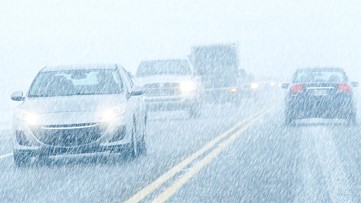In the United States, daylight saving time starts on the second Sunday in March each year when clocks are set forward one hour. Nearly eight months later, the clocks are turned back again to standard time on the first Sunday of November.
On March 2, Senator Marco Rubio (R-FL) reintroduced the Sunshine Protection Act in the Senate. If passed, the legislation would make daylight saving time permanent nationwide and end the practice of changing clocks twice a year.
But one VERIFY viewer wants to know if daylight saving time is currently observed in all 50 states.
THE QUESTION
Is daylight saving time observed in all 50 states?
THE SOURCES
THE ANSWER
No, daylight saving time is not observed in all 50 states.
WHAT WE FOUND
Daylight saving time is not observed in all 50 states. Two states, Arizona and Hawaii, follow permanent standard time year-round. Five U.S. territories, American Samoa, Guam, the Northern Mariana Islands, Puerto Rico and the Virgin Islands, also observe permanent standard time.
During World War I, Congress passed the Standard Time Act of 1918. The act adopted standard time in the U.S., and it established five standard time zones that are still in use today: the Eastern, Central, Mountain, Pacific and Alaskan zones.
The act also set a summer daylight saving time to begin on the last Sunday of March and conclude on the last Sunday in October. After World War I, Congress abolished summer daylight saving time at the federal level, but it was allowed to continue on a state-by-state basis.
However, as a result, the different local times between states led to confusion nationwide. This caused Congress to reexamine “the entire field of standard time” in 1961 so that times would be coordinated at the federal and state level.
This reexamination resulted in the passage of the Uniform Time Act of 1966, which mandated standard time within the existing time zones and established a system of uniform daylight saving time nationwide. Under the law, states may choose to exempt themselves from observing daylight saving time, and remain on standard time year-round. But states do not have the authority to be on permanent daylight saving time.
For instance, Hawaii observes Hawaiian Standard Time year-round. In 1967, Hawaii abandoned the Uniform Time Act because of its relative proximity to the equator, which makes daylight saving time unnecessary, according to a 2017 article.
The state of Arizona also does not observe daylight saving time, with the exception of the Navajo Nation, which participates in daylight saving to keep in sync with the neighboring parts of the Nation in Utah and New Mexico. Instead, the majority of the state follows standard time year-round.
The state observed daylight saving time from 1918 to 1968, before permanently opting out, according to the Arizona State Library, Archive & Public Records.
“Arizona participated in daylight saving time in 1967, but energy consumption soared,” Calvin Schermerhorn, Ph.D., a history professor at Arizona State University, said in a 2018 article.
“In most of the country, an extra hour of daylight supposedly saved fuel used to heat and light buildings. But in most of the state, the scheme worked in reverse: air conditioners had to run longer. Businesses and schools paid more, farmers did not benefit, and parents also resented an extra hour of scorching sunlight for kids since the saving lengthened the hot afternoon,” Schermerhorn explained.
If the Sunshine Protection Act of 2023 were to become law, Arizona, Hawaii and the U.S. territories that currently do not observe daylight saving time would still not be mandated to do so.












